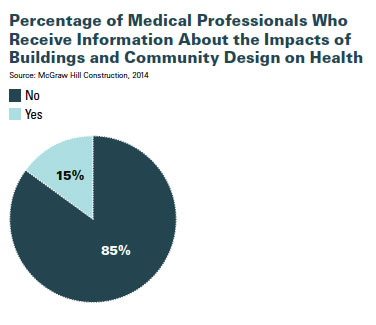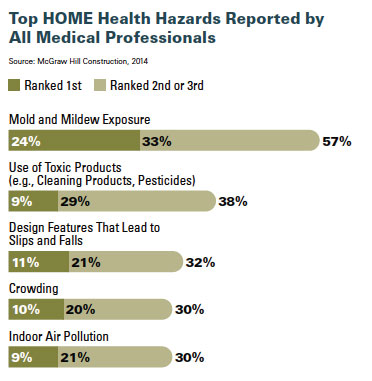No products in the cart.
Green Buildings Report: The Drive Toward Healthier Buildings
McGraw Hill Construction released a fascinating report this week titled, “The Drive Toward Healthier Buildings.” The report identifies a general lack of awareness among medical practitioners of the health benefits of green building and sustainability and urges for better understanding of these benefits.

What’s fascinating is the fact that the people working in green design and operations largely do so because of the positive contributions to human health. Aside from the added bonus of reducing energy-related costs, many sustainability professionals participate in the industry for its altruistic way of preserving the planet and providing a safer, healthier, and more durable way of living for future generations.
I was very surprised to read about this gap in understanding and advocacy between the medical and construction industries. After all, we’re all playing on the same team with the goal of enhanced human health.
One of the comments in the report that stood out to me was this: “Homeowners today typically look to friends, family, peers, and their doctors for advice on healthy home and building decisions. The challenge is that they are not looking to the industry, which is most well-informed of the ways homeowners can improve the physical environments they occupy. Therefore, because physicians have the second highest influence on these decisions, it is critical that they become informed advocates of healthy design, construction, and operations and maintenance decisions.”
This comment makes me wonder why homeowners aren’t reaching out to home performance professionals directly. I guess they could be asking these questions…
- Who is my best resource – home builder? general contractor? realtor? home inspector? construction manager? HVAC technician? interior designer? sustainability consultant? That’s a lot of different people to talk to…
- Will this person “greenwash” me or try to upsell me on something?
To resolve this quandary, McGraw Hill’s report simply encourages more green education and communication in the medical industry to help practitioners familiarize themselves with the connection between buildings and occupant health. While building design and construction practices may not be the sole cause or solution for a person’s health issues, the report suggests that general awareness can go a long way in reducing the chances of illness. It helps to ask questions about someone’s living conditions and to seek a holistic approach to enhanced health.
LEED, a rating system for sustainable buildings, focuses strongly on human health and wellbeing. To pursue LEED Certification, construction professionals must achieve a series of points related to improving indoor air quality.
As you can see from this chart, there are several home health hazards that contribute to a person’s overall health. LEED seeks to mitigate these hazards, and others, in residential and commercial settings.

There’s a lot of rich, insightful data in the report that highlights how and why sustainability should extend beyond the architecture and construction industries. Presumably, you live and work in a home or building…thus, green design and operations most certainly impact you, no matter what industry you belong to! What I learned from this report is that we have to do a better job of communicating the health benefits of sustainability to the world. That’s why we’re all in this, isn’t it?